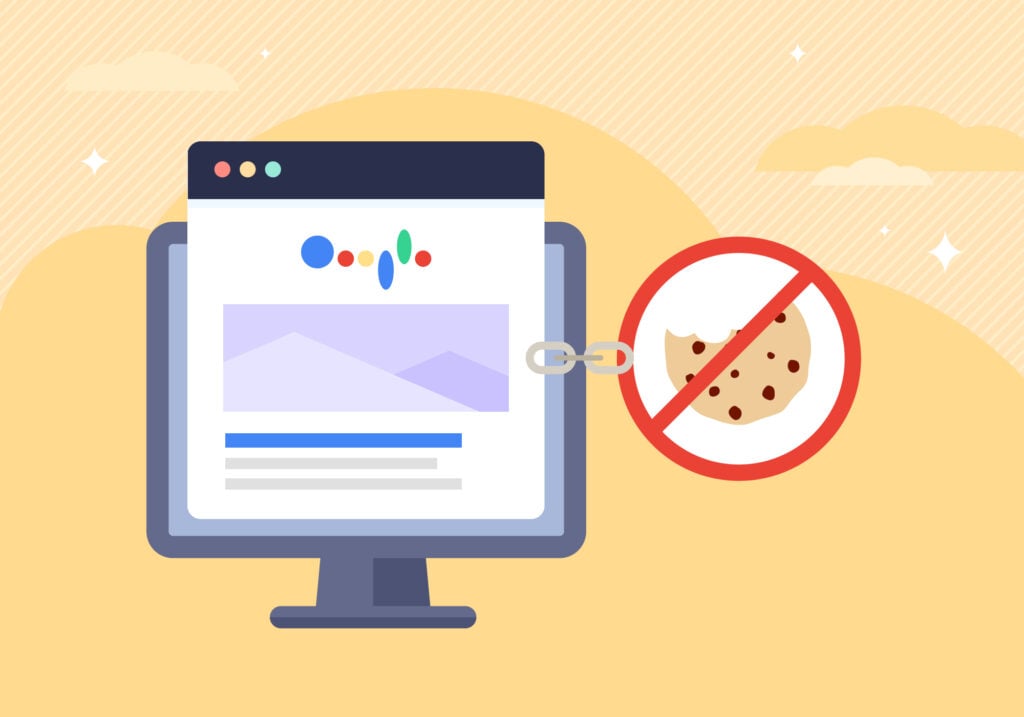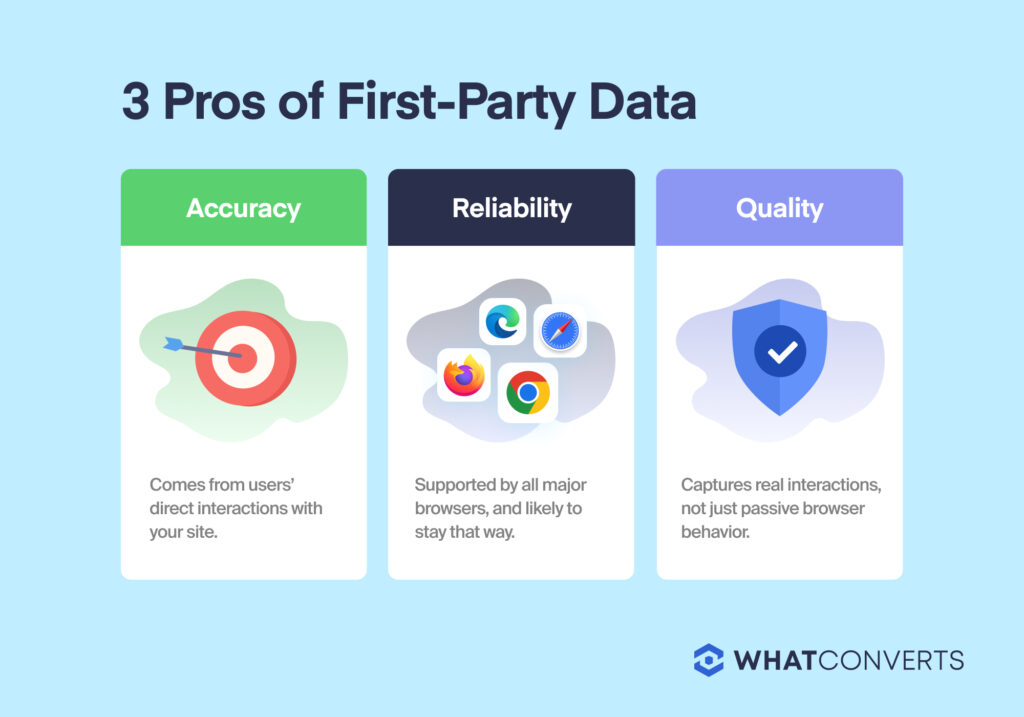
Your marketing data is about to take a big hit.
Google is getting ready to give users the choice to block third-party cookies, which means that marketers who aren’t collecting their data firsthand could see a huge chunk of their conversion tracking vanish overnight.
This isn't just another technical update to brush off. Safari and Firefox users already block third-party cookies by default, and when Chrome users get the same choice, most will likely opt out. We've seen this play out before: in 2021, Apple's App Tracking Transparency update started blocking third-party cookies by default and gave users the ability to opt in instead. In many countries—including the U.S., the U.K., Canada, Australia, Spain, Italy, and Japan—only 25% of users chose to opt back into tracking.
But tracking itself isn’t dead just because third-party cookies are going away. While many marketers scramble to patch together solutions for third-party cookie deprecation, others are already thriving without third-party data. Their secret? A return to first-party tracking fundamentals that deliver clearer, more actionable insights than third-party cookies ever could.
The Real Problem Isn't Third-Party Cookie Deprecation—It's Over-Reliance on Third-Party Data
For years, marketers have relied on third-party cookies as an easy way to track users across the web, retarget ads, and measure campaign performance. But this convenience came at a cost: we became overly dependent on data we don't own and can't verify.
Think about it. When you use third-party cookies, you're:
- Tracking users across domains you don't control
- Collecting data you can't validate
- Building strategies on information that could disappear tomorrow
Chrome's latest announcement simply makes explicit what savvy marketers have known for years: depending on third-party data is a risky strategy.
The First-Party Future Is Already Here
While much of the industry scrambles to adapt to a post-cookie world, many marketers are already thriving without third-party data. Their secret? A return to first-party data fundamentals.
First-party data isn't just "good enough"—it's actually better than third-party data in several ways:
- Accuracy: First-party data comes directly from your users' interactions with your business. There's no guesswork, no inference, just clear signals about what your prospects and customers actually want.
- Reliability: Unlike third-party cookies, which can be blocked or cleared, first-party data collection is supported by all major browsers and is likely to stay that way.
- Quality: First-party data captures real interactions with your business—calls, form fills, chats—not just passive browser behavior. This means you're measuring actual buying intent, not just general interest.
What First-Party Lead Tracking Can Do
When you shift from third-party cookie dependence to first-party data collection, something interesting happens: you start getting clearer, more actionable insights about your marketing performance.
Instead of trying to piece together a customer journey across multiple domains, you can focus on what matters:
- Which marketing channels are driving qualified leads
- How those leads are interacting with your business
- What actions indicate real buying intent
- Which campaigns are delivering the highest ROI
This isn't theoretical—it's happening right now. Marketers using first-party lead tracking are able to:
- Capture every lead interaction across all channels
- Track the complete customer journey from first touch to conversion
- Measure actual lead value instead of just conversion counts
- Make data-driven decisions about campaign optimization
Complete Data Visibility Changes Everything
In the rush to replace third-party cookies, many marketers are cobbling together multiple point solutions—one tool for call tracking, another for form submissions, yet another for chat conversations. But this fragmented approach creates its own problems.
Think about trying to optimize a Google Ads campaign when your conversion data is split across three different platforms. You might see that Campaign A drives more form fills while Campaign B generates more phone calls, but which one is actually delivering more value? Without a unified view of your data, you're still making decisions based on incomplete information.
This is where a comprehensive first-party data foundation becomes crucial. When all your lead data lives in one place, you can:
- Connect the dots across channels: See how prospects move between different contact methods, and understand which combination of touchpoints leads to the highest-value conversions.
- Measure true campaign performance: Track both the quantity and the quality of leads from each campaign, and calculate the actual cost per qualified lead (not just the cost per conversion).
- Enable smarter optimization: Feed high-quality, first-party lead data back to your ad platforms and train automated bidding algorithms to target qualified, high-value prospects.
The key is having all this data in one place, structured in a way that makes it actionable. This unified view isn't just about replacing what you'll lose with third-party cookie deprecation—it's about building something fundamentally better.
Case Study: Data-Driven Marketing: Agency's In the Weeds Methods Win 7X ROI
Making the Transition
The shift to first-party data doesn't have to be traumatic. Here's how forward-thinking marketers are making the jump:
Audit Your Current Tracking
Start by mapping out where third-party cookies currently play a role in your marketing measurement. Look at your advertising platforms, analytics tools, and any other marketing technologies that might be affected. Understanding what you'll need to replace is crucial for planning a seamless transition.
Implement First-Party Tracking
Deploy a comprehensive first-party tracking solution before third-party cookies disappear completely. Look for a platform that can track all conversion types—calls, forms, chats, and transactions—in one place. The goal is to have a single source of truth for all your lead data.
Focus on Lead Quality
Stop chasing users across the internet and start focusing on the interactions that matter. With first-party tracking, you can see exactly how leads engage with your business, what marketing brought them in, and whether they're likely to convert. This focused approach often reveals that your best leads come from a smaller subset of your marketing efforts.
Optimize Based on Real Value
Move beyond basic conversion metrics to understand the actual revenue potential of your leads. By tracking lead quality and potential value, you can optimize your campaigns for what really matters—ROI. This might mean spending more on channels that bring in fewer but higher-quality leads, rather than chasing volume.
The Future Is Bright (Even Without Third-Party Cookies)
The death of third-party cookies isn't the end of digital marketing—it's an opportunity to build something better. By focusing on first-party data, we can create marketing strategies that are:
- More privacy-conscious
- More accurate
- More valuable for our businesses
- More sustainable for the long term
The tools and technology exist today to thrive in a cookieless world. The only question is: are you ready to make the switch?
Ready to future-proof your marketing analytics? Start your free 14-day trial of WhatConverts and see how first-party lead tracking can transform your marketing insights.
Get a FREE presentation of WhatConverts
One of our marketing experts will give you a full presentation of how WhatConverts can help you grow your business.
Schedule a Demo
Grow your business with WhatConverts






